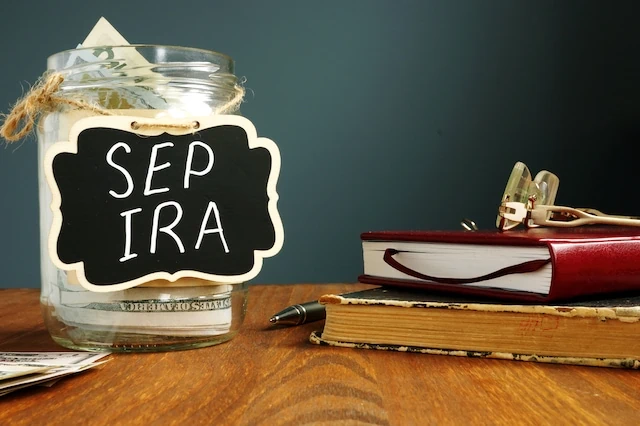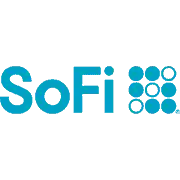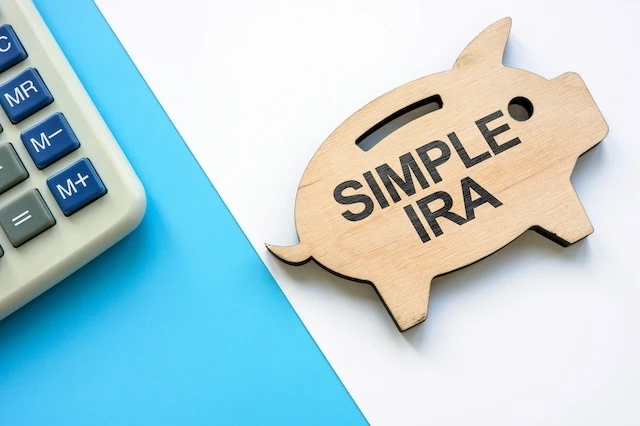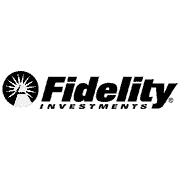Self-employed workers might be their own boss, but that can make things a little more complicated when it comes to saving for retirement.
With a traditional job, employers help smooth retirement saving by automatically deducting money from employee paychecks and providing 401(k)s and other defined contribution plans where they can invest. Self-employed workers need to shoulder more of the load themselves.
That starts with choosing from a wide variety of self-employment retirement plans, wherein self-employed individuals can get all of the same (or similar) retirement tax benefits as traditional W-2 workers. If you’re self-employed and ready to start saving for retirement, check out the seven self-employed savings options below. One (or more) could be just the ticket for you.
Featured Financial Products
Best Self-Employed Retirement Plans for Your Retirement Savings
Read on as I explain the most crucial aspects of seven self-employed savings options. That includes contribution limits, tax advantages, whether they require minimum distributions at any point, and—most importantly—what situation is ideal for each of these plans.
1. Traditional Individual Retirement Account (IRA)
Best for: A traditional IRA is the best fit for people who expect to be in a lower tax bracket during retirement and don’t mind a rather low annual contribution limit.
Contribution limits: Well, they are pretty small, but you’ve got to start somewhere. The 2024 yearly contribution limit for a traditional IRA is $7,000 (it’ll stay the same as 2025). Note that this is a joint contribution limit for traditional and Roth IRAs. So, if you have both types of accounts, that is the total amount you can stash in them combined per year. If you’re 50 or older, you can make a “catch-up contribution” of an additional $1,000 in 2024. For 2025, the catch-up amount stays the same at $1,000.
Tax advantages: Contributions to this retirement plan are tax-deferred, meaning you don’t pay taxes on any interest or gains until you withdraw money—optimally not until retirement. At this point, you might be in a lower tax bracket and, if so, will pay less in taxes than you would have when you originally contributed. However, you should know that if you make withdrawals before age 59½, you’ll pay a 10% early withdrawal penalty on top of ordinary taxes (unless an exception applies).
Required minimum distributions: At age 73, you are required to start taking distributions, which are taxed as ordinary income. In 2033, this age jumps to 75.
|
Primary Rating:
4.3
|
Primary Rating:
4.9
|
Primary Rating:
4.2
|
|
Commission-free trading. Robinhood Gold: Free 30-day trial, then $5/mo.
|
Commission-free trading.
|
Commission-free trading.
|
Related: 7 Best Schwab Funds to Buy
2. Roth IRA
Best for: A Roth IRA is ideal for people who expect to be in a higher tax bracket during retirement. But even if you have no idea which way your tax rate might be headed, the Roth has some pretty enticing tax benefits over the long term.
Contribution limits: Just like a traditional IRA, a Roth’s contribution limit is $7,000 for 2024 and will be the same for 2025. Again, this is a combined limit for people with both a traditional and a Roth IRA. Those 50 and older can add a $1,000 catch-up contribution in both 2024 and 2025.
Here’s the rub on contributions: If you make too much money, you’re out of luck. In 2024, you must have a modified adjusted gross income of less than $161,000 to contribute to a Roth if you file as single. That figure rises to $165,000 for 2025.
Tax advantages: You fund a Roth IRA with after-tax dollars, so unlike with a traditional IRA, there’s no upfront tax advantage. However, after that, you can tell Uncle Sam to get lost, because unless you take early withdrawals, that’s the last time you’ll owe him anything on that money.
Specifically, Roth IRA earnings grow tax-free, and when you withdraw your earnings during retirement, you don’t pay any income or capital gains taxes. Like with traditional IRA, there is a 10% early withdrawal penalty (before age 59½), however it only applies to the earnings on your account. You can withdraw your contributions at any time tax-free and penalty-free.
Required minimum distributions: Good news: There are no required withdrawals until after the death of the owner. So you can hang on to your money and let it grow tax-free as long as you like.
My final thought on traditional and Roth IRAs: Contributing some money to both opens up options in retirement to manage your tax bill better. That’s because Roth IRAs don’t have tax consequences in retirement, whereas traditional IRAs do.
|
Primary Rating:
4.3
|
Primary Rating:
4.1
|
Primary Rating:
3.6
|
|
No annual, opening, or closing fees. Robinhood Gold: Free 30-day trial, then $5/mo.
|
No annual or opening fees. $100 closing fee. M1 Plus: $10/mo. or $95/yr.
|
$4/mo. or 0.25% annual fee*. Premium: Additional 0.15% annual fee.**
|
Related: The 10 Best Vanguard Funds to Buy for the Everyday Investor
3. Simplified Employee Pension IRA (SEP IRA)
Best for: Small-business owners with few (or no) employees or self-employed folks who want much higher limits than those offered by IRAs—up to roughly 10 times higher, in fact.
Contribution limits: Hefty. For 2024 and 2025, employer contributions to a SEP IRA can’t be higher than the lesser of the following:
- 25% of the employee’s compensation
- $69,000 in 2024, rising to $70,000 in 2025
If you’re self-employed, you must use a special calculation to determine your personal contribution limits. Your compensation is equal to your net earnings from self-employment, minus any contributions to your own SEP IRA and half of your self-employment tax.
As far as catch-up contributions go, well, there are none. SEP IRAs don’t allow them for those 50 and older.
SEP IRAs are a way for business owners to contribute to their employees’ retirement plans as they save for themselves at the same time. Employers must contribute to eligible employees’ retirement plans as an equal percentage of compensation. They can’t contribute a higher percentage to their own account than to their employees’ accounts. So, if you want to save 15% of your compensation, be prepared to pony up 15% to each eligible employee as well.
Tax advantages: A SEP IRA is a tax-deferred retirement plan. The tax-deferred growth of interest, dividends, and capital gains earned aren’t subject to ordinary tax until you take withdrawals during retirement. Withdrawals before age 59½ generally face a 10% additional tax.
Required minimum distributions: Distributions are required starting at age 73. The age will increase to 75 starting in 2033.
|
Primary Rating:
4.1
|
Primary Rating:
4.4
|
Primary Rating:
3.6
|
|
No annual or opening fees. $100 closing fee. M1 Plus: $10/mo. or $95/yr.
|
No annual or opening fees. $20 closing fee.
|
$4/mo. or 0.25% annual fee*. Premium: Additional 0.15% annual fee.**
|
Related: 9 Best Fidelity Index Funds to Buy
4. Savings Incentive Match Plan for Employees IRA (SIMPLE IRA)
Best for: Small employers (100 or fewer employees) who want start-up retirement plans and aren’t currently sponsoring another plan.
Contribution limits: For something with “simple” in its name, it’s not exactly simple, but we can boil it down by saying they are quite a bit higher than traditional and Roth IRAs but lower than 401(k)s and SEP IRAs.
Both employers and employees can contribute to these accounts. Employee contributions to a SIMPLE IRA cannot exceed $16,000 in 2024, or $16,500 in 2025. For or some applicable SIMPLE retirement accounts, (generally those whose employers have a low number of employees) the limit is $17,600.
Employees who also participate in another employer plan that year and have elective salary reductions under that retirement plan are limited to $23,000 in total salary reduction contributions in 2024, or $23,500 in 2025.
If the SIMPLE IRA allows catch-up contributions to people 50 or older, the limit is $3,500 in both 2024 and 2025. For 2025, employees ages 60 to 63 have a higher catch-up contribution limit of $5,250.
Employers are required to contribute to all eligible employees’ SIMPLE IRAs in one of two ways:
- They can match an employee’s salary reduction contributions on a dollar-to-dollar basis up to 3% of the employee’s compensation. The employer can make a lower SIMPLE IRA contribution if it’s at least 1% and for no more than two out of five years. If an employer plans to match a lower percentage, the employees must be informed of the lower match within a reasonable amount of time before the 60-day election period for the calendar year.
- They can kick in flat contributions of 2% on the first $345,000 of every eligible employee’s compensation. These nonelective contributions apply whether or not the employee decides to make salary deduction contributions. For 2025, the compensation limit for figuring contributions rises to $350,000.
Tax advantages: These retirement plans are funded with pre-tax contributions, so the investments grow tax-deferred until retirement. All money is immediately vested. For employers, a tax credit equal to 50% of startup costs (maximum $5,000 per year) for three years is available.
Required minimum distributions: Beginning at age 73, distributions are required. In 2033, the age is set to change to 75.
Related: 10 Best Fidelity Funds to Buy
Featured Financial Products
5. Health Savings Account (HSA)
Best for: Anyone with a qualifying high-deductible health plan (HDHP).
Contribution limits: HSA contribution limits are $4,150 for an individual and $8,300 for family coverage in 2024. Those limits rise to $4,300 and $8,550, respectively, in 2025. And there’s a $1,000 catch-up contribution available for anyone 55 or older.
Tax advantages: In a word, they’re awesome. HSAs offer some of the best tax benefits out there.
- HSA contributions are tax-free. If contributions are made through payroll deductions, they can be contributed pre-tax. Anyone self-employed can use contributions as a tax deduction to reduce their self-employment taxes.
- Earnings grow tax-free.
- Any withdrawals used for qualified medical expenses aren’t taxed. Anyone 65 or older can take withdrawals for any purpose, and while the money is taxed at that time, there is no penalty.
Required minimum distributions: Nada. HSA funds are never subject to required minimum distributions.
|
Primary Rating:
4.5
|
Primary Rating:
4.4
|
Primary Rating:
4.3
|
|
Investment Minimum: $0 for Fidelity HSA, $10 for Fidelity Go HSA
|
Investment Minimum: $500
|
Investment Minimum: $1,000
|
Related: How to Invest HSA Funds [Level Up Your Retirement Savings]
6. Solo 401(k)
Best for: A business owner with no employees or only a spouse as an employee.
Contribution limits: Very high. You can make contributions to a solo 401(k) in two different ways:
- Through salary deferral, as the employee. You can contribute up to 100% of your earned income up to the annual contribution limit, which for 2024 is $23,000 for those younger than 50 and $30,500 for those 50 and over (including a catch-up contribution). In 2025, those figures rise to $23,500 for those under 50, $31,000 for those 50 and up, and $34,750 for anyone ages 60 to 63.
- Through profit sharing, as the employer. Additionally, you can contribute up to 25% of your compensation or net business self-employment income.
When you add up both types of contributions, the total amount for 2024 cannot be more than $69,000 if you’re younger than 50. That figure rises to $70,000 for 2025. If you’re 50 or older, you can kick in up to $7,500 more as a catch-up contribution and if you’re age 60 to 63, you can add up to $11,250 in catch-up contributions. Not bad!
Tax advantages: All contributions a worker makes as the “employer” to a traditional solo 401(k) are tax deductible and can reduce your taxable income for that year. You can also have a Roth solo 401(k), where contributions are made with after-tax money. Just like with a Roth IRA, they grow tax-free, and qualified distributions are tax-free, too.
Required minimum distributions: With a traditional solo 401(k), you must start RMDs for your solo 401(k) at age 73. The age will rise to 75 beginning in 2033. Unlike Roth IRAs, Roth solo 401(k)s used to have required distributions—but that ends starting in 2024.
Related: 7 Best High-Dividend ETFs for Income-Hungry Investors
Featured Financial Products
7. Pension
Best for: Any size business with sufficient funds and understanding to run it. In addition, a self-employed person can actually set up this type of plan for themselves with the help of an actuary, but it can be complicated and expensive to run.
Contribution limits: Massive! For 2024, contributions are limited to no more than 100% of the participant’s average compensation for the highest three consecutive calendar years or $275,000, whichever is less. In 2025, that figure rises to $280,000.
Tax advantages: Employers can contribute and deduct a much higher amount than other retirement plans. Distributions in retirement are taxed as ordinary income.
Required minimum distributions: Typically, distributions begin when the participant reaches the plan’s specified retirement age. Often, small plans let participants cash out their benefits at any age by choosing a lump sum distribution instead of the annual lifetime benefits. Frequently, larger plans let participants begin payments early if specified conditions are met, such as a minimum number of years of service and minimum age.
Related: 10 Best Vanguard Index Funds to Buy
Which Self-Employed Retirement Plan Is Best for Me?
Traditional IRAs are an excellent choice for self-employed people with a relatively high income right now. That’s because taxes are taken out when you withdraw in retirement, when you likely will be in a lower tax bracket. (Note: You have the option to roll over an old 401(k) into your IRA.)
Roth IRAs are best for people who expect their retirement income to be higher than their current income. Most retirement plans use tax-deferred contributions, but Roth IRAs are funded with post-tax money that grows (and is withdrawn) tax-free.
SEP IRAs are best for self-employed individuals who want something simple, but with a higher contribution limit than traditional IRAs. A SEP IRA is great for people who don’t plan on having employees in the future.
SIMPLE IRAs are best for self-employed people who want to contribute both as an employer and employee. It’s ideal for people who plan to employ more than a few additional workers.
Health savings accounts are excellent for health expenses, of course, but they work nicely for retirement savings, too. By allowing you to contribute tax-free to the account, letting earnings grow tax-free, and never charging taxes on qualified medical expenses, it’s fair to say that HSAs offer triple tax benefits. Medicare doesn’t cover 100% of health care costs, so your HSA is a great way to pay for additional expenses. If you choose to withdraw money for other purposes (like retirement expenses) after age 65, it’s only taxed as ordinary income.
Solo 401(k)s are best for self-employed workers who have no employees or just a spouse as an employee. A solo 401(k) has a higher contribution limit than many other options.
Pensions are best for high-income workers. These defined benefit plans have the highest contribution limit—up to $275,000 in 2024 and $280,000 in 2025.
Featured Financial Products
Can I Contribute to an IRA If I Am Self-Employed?
Yes, self-employed workers can contribute to an IRA. Just make sure your contributions don’t exceed your earned income for the year or the contribution limit of $7,000 for those under age 50 or $8,000 for those 50 and older for 2024 or 2025.
How Do I Start a Self-Employed Retirement Plan?
The first step in opening self-employed retirement plans is choosing the type of plan that makes the most sense for your situation.
Are you a self-employed worker with no employees? A solo 401(k) might be a great fit for you. Or are you a business owner with several employees? In that situation, a SEP IRA might be your best option. Review your options (detailed in earlier sections) to find the best type of account for you.
Once you’ve chosen a plan, pick an account provider (more on this in the next section).
Note that some types of accounts can be started at any time, while other accounts have to be set up during a specific time frame. For example, you can set up a SIMPLE IRA between Jan. 1 and Oct. 1.
From there, you fill out the appropriate paperwork to set up your account. Some plans are easier to set up (such as a Roth or traditional IRA), while some, like a SIMPLE IRA, are more complicated. If you previously had a retirement plan with an employer, you might transfer those savings to a rollover IRA or solo 401(k).
Can I Roll Over My Retirement Savings Into a Self-Employed Retirement Plan?
Yes. You can roll over an old employer-sponsored retirement account into an IRA. This preserves the tax-deferred status of your retirement savings and can often give you much more flexibility with your investments.
However, sometimes a former employer will let you leave the money in their plan, and this could be strategic in some situations. For example:
- When you roll your 401(k) into a rollover IRA, you lose the creditor protection that comes with assets held in a 401(k) plan vs. IRA. If you might be facing claims from people you owe money to, commercial creditors typically can’t touch your 401(k), but your IRA might not be off-limits.
- Furthermore, if you roll your 401(k) into an IRA, you no longer qualify for the “rule of 55,” which lets workers leave their job and begin taking penalty-free distributions from their employer’s retirement plan after they’ve reached age 55. This isn’t an issue if you don’t plan to retire early, but it’s nice to have the option.
How Do Retirement Accounts for Self-Employed People Fit Into the Broader Retirement Savings Plan?
Most people have heard of a 401(k), and it’s often the first account people think of when retirement plans are mentioned. However, there are many more types of retirement plans, and a self-employed person has several options for tax-advantaged accounts.
So, as we’ve seen, self-employed workers can save for retirement through many different plans. In fact, a combination of more than one type of plan may be best. For example, someone may use an HSA as supplemental retirement savings outside of a main retirement savings account.
But don’t let all the choices paralyze you into inaction. Instead of wasting time trying to pick the perfect path for your retirement savings goal, just take the first step and get started one way or another.

























